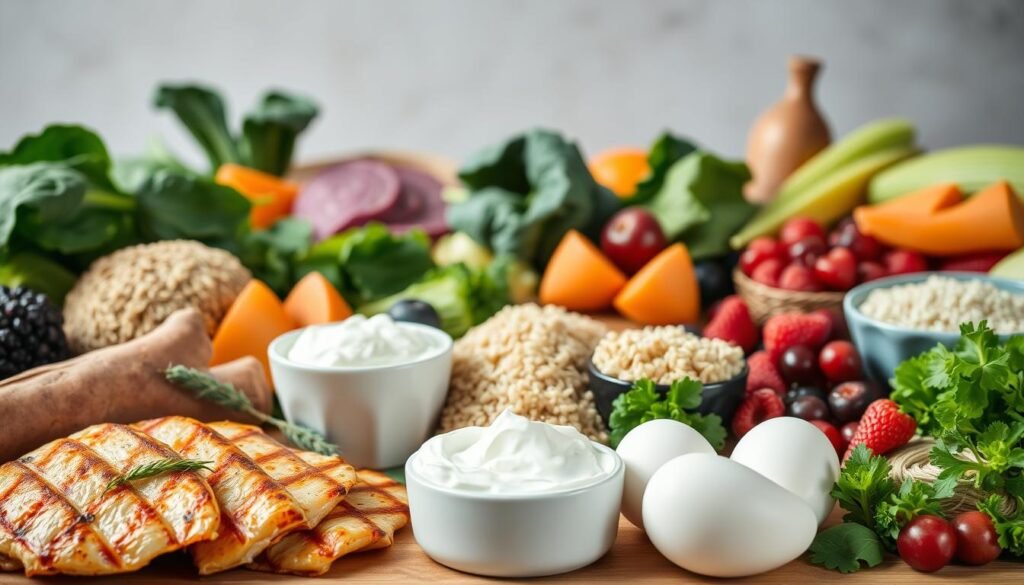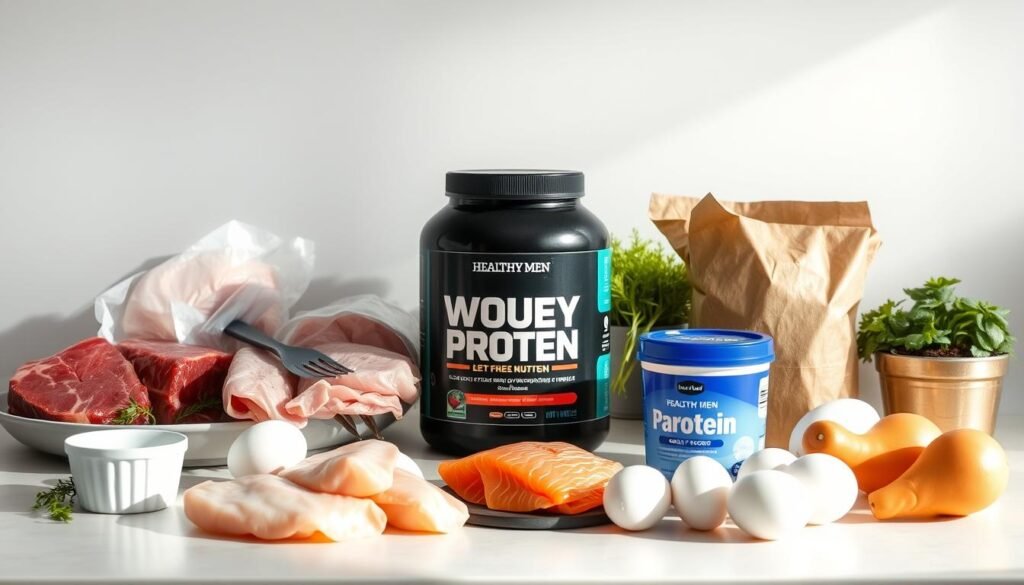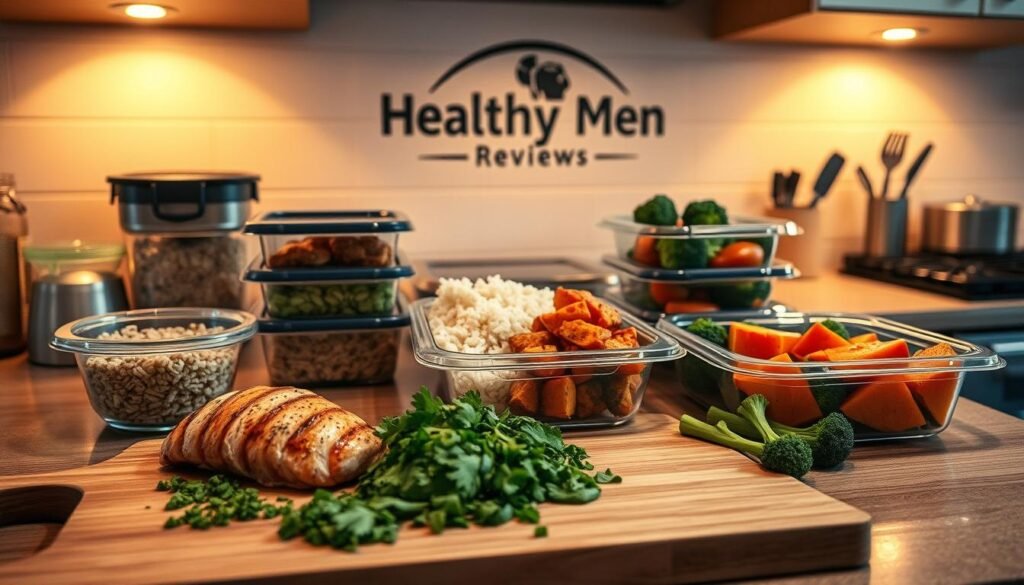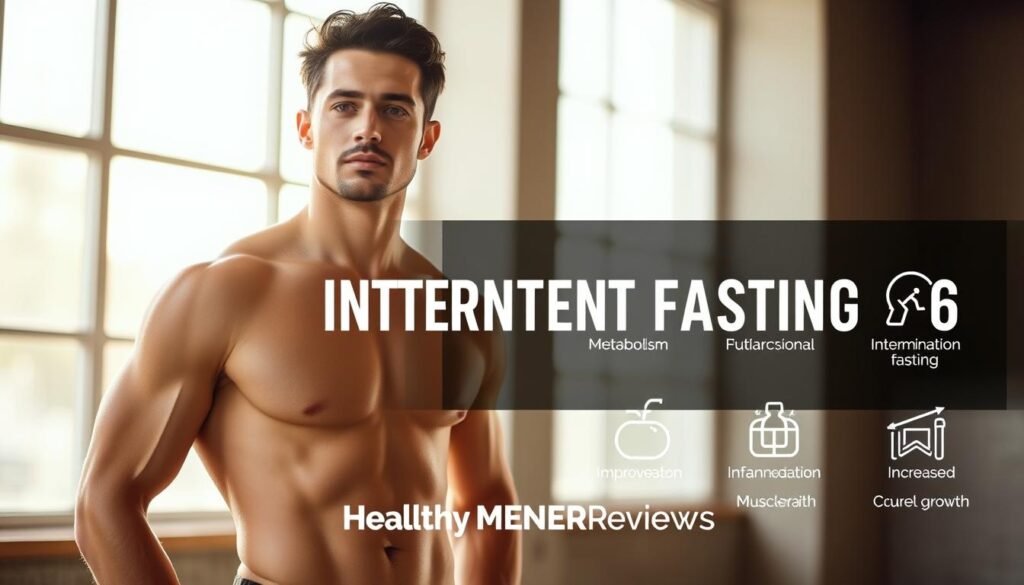Creating a muscle-friendly grocery list doesn’t have to be expensive. You can eat nutritious food that helps your fitness goals without spending too much.
Start by choosing whole foods like lean proteins, complex carbs, and healthy fats. These foods are key for optimal muscle growth and good health.
By planning your meals and making smart shopping choices, you can create a budget-friendly grocery list. This list will meet your needs.
Key Takeaways
- Focus on whole, nutrient-dense foods to support muscle growth.
- Plan your meals to make smart shopping choices.
- Shop for lean proteins, complex carbohydrates, and healthy fats.
- Create a budget-friendly grocery list that meets your fitness goals.
- Eat nutritious food without overspending.
The Science Behind Muscle Building Nutrition

Knowing the basics of muscle building nutrition is key to a good diet plan. A balanced diet with proteins, carbs, and healthy fats is vital for muscle growth.
Protein, Carbs, and Fats: The Muscle Building Trifecta
Proteins are the foundation of muscle, giving muscles the amino acids they need to grow. Carbs are the main energy source for workouts. Healthy fats help with hormone production and health. Getting the right mix of these nutrients is crucial for building muscle.
- Proteins: Choose lean sources like chicken, fish, and legumes.
- Carbohydrates: Include complex carbs from whole grains, fruits, and veggies.
- Fats: Focus on healthy fats from nuts, seeds, avocados, and olive oil.
Caloric Surplus vs. Quality Nutrition
To grow muscles, you need to eat more calories than you burn. But it’s not just about eating more. Eat nutrient-rich foods to help your muscles grow.
Micronutrients That Support Muscle Growth
Vitamins and minerals are important for muscle function and recovery. Make sure you get enough vitamins D and B, iron, and zinc from your diet or supplements.
Budget-Friendly Protein Sources for Muscle Growth

Building muscle on a budget means planning your protein intake carefully. Protein is key for muscle growth, and there are many affordable sources.
Affordable Animal-Based Protein Options
Animal-based proteins are top-notch for building muscle. Look for these affordable choices:
- Eggs: Eggs are full of protein and easy to use in many dishes.
- Canned Tuna: Tuna is packed with protein and omega-3s, making it a cheap and easy option.
- Chicken Thighs: Thighs are cheaper than breasts but still full of protein.
Cost-Effective Plant-Based Protein Alternatives
For those who prefer or need plant-based options, here are some affordable choices:
- Beans and Legumes: Beans and legumes are rich in protein and fiber, and won’t break the bank.
- Tofu: Tofu is versatile and high in protein, making it a great choice for many dishes.
- Lentils: Lentils are a cheap, high-protein food that’s easy to add to meals.
| Protein Source | Protein Content per Serving | Average Cost per Serving |
|---|---|---|
| Eggs | 6 grams per large egg | $0.25 |
| Canned Tuna | 20 grams per 3 oz serving | $1.50 |
| Chicken Thighs | 26 grams per 3 oz serving | $1.25 |
| Black Beans | 15 grams per 1 cup cooked | $0.75 |
| Tofu | 20 grams per 3 oz serving | $1.00 |
Protein Powders: When They're Worth the Investment
Protein powders can be a quick way to boost your protein intake. While some can be pricey, there are affordable options. Look for sales or buy in bulk to save. Consider whey or plant-based proteins like pea or rice.
By adding these affordable protein sources to your diet, you can support muscle growth without overspending. Whether you prefer animal or plant-based proteins, there are many affordable options available.
Complex Carbohydrates to Fuel Your Workouts
To get the most out of your workouts, you need the right fuel. Complex carbohydrates give you the energy to keep going, even when it gets tough.
Inexpensive Whole Grains and Starches
Whole grains and starches are great for complex carbs. Look for affordable options like oats, brown rice, and whole wheat bread. They give you energy and are full of fiber, vitamins, and minerals.
- Oats: A versatile and affordable breakfast option.
- Brown rice: Pairs well with a variety of protein sources.
- Whole wheat bread: Great for making pre-workout sandwiches.
Budget-Friendly Energy Sources
Other affordable energy sources include starchy veggies like potatoes and sweet potatoes. Fruits like bananas and apples are also good. These foods are not only cheap but also full of nutrients.
Top picks:
- Potatoes: Rich in potassium and complex carbs.
- Bananas: Convenient and rich in easily digestible carbs.
Pre and Post-Workout Carb Timing
When you eat carbs matters a lot. Eating complex carbs before your workout gives you energy. Afterward, they help your body recover.
By adding these complex carbs to your diet and timing them right, you’ll boost your workout performance. This helps you build muscle too.
Healthy Fats That Support Muscle Recovery
Muscle recovery isn’t just about protein; healthy fats are also vital for optimal results. When you’re building muscle, your body needs a balanced intake of nutrients to recover and grow. Healthy fats, in particular, play a crucial role in this process by providing essential fatty acids and supporting overall health.
Essential Fatty Acids on a Budget
You don’t have to break the bank to get your daily dose of essential fatty acids. Nuts and seeds are affordable sources; almonds, walnuts, chia seeds, and flaxseeds are rich in omega-3 and omega-6 fatty acids. Avocados are another great option, offering healthy fats that support muscle recovery and overall well-being.
Affordable Cooking Oils and Alternatives
Cooking oils are a staple in any kitchen, and some are better than others for your health. Olive oil is a popular choice due to its health benefits, including anti-inflammatory properties. Other affordable options include canola oil and coconut oil, which are versatile and can be used in a variety of dishes.
Multi-Purpose Fat-Rich Foods
Incorporating multi-purpose fat-rich foods into your diet can be both cost-effective and nutritious. Foods like salmon, which is rich in omega-3 fatty acids, can be used in various recipes. Other examples include full-fat dairy products and eggs, which provide healthy fats along with protein.
By including these healthy fats in your diet, you can support muscle recovery and enhance your overall muscle-building efforts. Whether you’re using affordable cooking oils or incorporating fat-rich foods, your body will benefit from the balanced nutrition.
Micronutrient-Rich Foods for Optimal Performance
Micronutrients are key to your fitness journey. The right foods can make a big difference. It’s important to know how to add a variety of these foods to your diet without spending too much.
Affordable Fruits and Vegetables by Season
Fruits and vegetables are packed with micronutrients. Buying them in season can save money and keep them nutritious. For instance, berries are full of antioxidants and are cheaper when they’re in season.
Frozen vs. Fresh: Making Economical Choices
Choosing between frozen and fresh produce is common. Frozen options are as good as fresh and often cheaper. They also last longer, which helps avoid food waste. “Frozen fruits and vegetables are picked at peak ripeness and flash-frozen, preserving their micronutrient content,” notes a recent study.
Budget Supplements vs. Whole Food Sources
Supplements might seem appealing, but whole foods are better. Whole foods offer a mix of nutrients that support health and performance. If you do use supplements, pick affordable ones that fill nutritional gaps.
Smart choices about micronutrients can boost your performance without costing a lot. Focus on seasonal produce, consider frozen options, and choose whole foods over supplements whenever you can.
Creating Your Ultimate Muscle Building Grocery List
Making a muscle building grocery list means finding foods that are both affordable and nutritious. You need a pantry full of the right foods to build muscle. This guide will show you the essentials, seasonal foods, and specialty items to add to your list.
The Essentials: Base Items for Every Budget
Start your list with staple items that are affordable and healthy. These include:
- Protein sources like chicken, beans, and eggs
- Complex carbohydrates such as brown rice, oats, and whole wheat bread
- Healthy fats like nuts, seeds, and avocados
These items form a solid base for your diet. They help you build muscle without spending too much.
Rotating Seasonal Items for Variety and Savings
Adding seasonal produce to your list can make your diet more varied and save money. Produce in season is often cheaper and tastes better. For example, summer berries and fall squash are great choices.
| Season | Produce | Benefits |
|---|---|---|
| Summer | Berries, Tomatoes | Rich in antioxidants, vitamins |
| Fall | Squash, Apples | High in fiber, vitamins |
| Winter | Citrus fruits, Kale | Packed with vitamin C, antioxidants |
Specialty Items Worth the Occasional Splurge
While it’s key to stay within your budget, some specialty items are worth splurging on. These might include:
- Grass-fed beef for its high-quality protein and nutrients
- Wild-caught salmon for its omega-3 fatty acids
- Organic produce when it’s not in season
Adding these items to your list can boost your muscle building diet. They offer extra nutritional benefits.
Smart Shopping Strategies to Maximize Your Budget
It’s key to stretch your grocery budget for a lasting muscle building diet plan. Smart shopping can help you get the nutrients you need without spending too much.
Bulk Buying: When It Makes Financial Sense
Buying in bulk can save you money on items like grains, nuts, and dried fruits. But, think about how much space you have and when things expire to avoid throwing food away. For example, buying protein powder or supplements in bulk can cut your muscle building meal prep costs by up to 20%.
Store Brands vs. Name Brands: The Quality Comparison
Many store-brand items are just as good as name-brand ones but cost less. Check the ingredients and nutrition to make sure you’re not losing out on quality. Store-brand items are a smart way to save on everyday needs.
Digital Coupons, Cashback Apps, and Loyalty Programs
Use digital tools to boost your savings. Try digital coupons, cashback apps like Ibotta, and loyalty programs from your local stores. These can help you spend less on groceries and more on your muscle building diet plan.
By using these smart shopping tips, you can better manage your grocery budget and reach your muscle building goals. Here are some important points to remember:
- Buy in bulk when it makes financial sense
- Opt for store-brand products when possible
- Utilize digital coupons and loyalty programs
Meal Prep Techniques to Save Time and Money
To reach your muscle-building goals without spending too much, learning meal prep is key. It’s about planning, smart shopping, and quick cooking.
Batch Cooking for Budget Efficiency
Batch cooking is a smart way to make protein sources for muscle building like chicken, beans, and lentils in big amounts. It saves time and ensures you have healthy meals ready.
This approach also cuts down on food waste. It lets you use sales on basic items.
Storage Solutions to Prevent Food Waste
Keeping food fresh is vital. Use airtight containers and organize your fridge well. This way, your prepped meals stay fresh longer.
Labeling containers helps you know what you have. It ensures you eat older items before they go bad.
Repurposing Leftovers for Variety
Don’t throw away leftovers. Get creative and make new meals from them. For example, yesterday’s roasted chicken can be tomorrow’s chicken salad.
Repurposing leftovers saves money and keeps your diet interesting. It stops meal boredom.
Using these meal prep tips, you can save time, cut waste, and meet your muscle-building goals without spending too much.
Sample 7-Day Muscle Building Meal Plan on a Budget
To build muscle on a budget, you need a meal plan that’s both affordable and nutritious. A good meal plan makes sure you get enough proteins, carbs, and fats for muscle growth. It also helps you save money.
Economical Breakfast Options
Starting your day with a healthy breakfast is key for muscle building. Here are some affordable options:
- Oatmeal with banana and peanut butter
- Scrambled eggs with whole-grain toast
- Greek yogurt with berries and granola
These breakfasts are not only cheap but also full of nutrients for muscle growth.
Budget-Friendly Lunch and Dinner Rotation
For lunch and dinner, choose foods high in protein, complex carbs, and healthy fats. Some affordable choices include:
- Grilled chicken breast with brown rice and steamed vegetables
- Lentil soup with whole-grain bread
- Quinoa salad with canned tuna, avocado, and mixed vegetables
Switching between these meals keeps your diet interesting and meets your nutritional needs.
Cost-Effective Snacking for Muscle Growth
Snacking is vital for muscle building, keeping your muscles fueled between meals. Choose affordable snacks like:
- Apple slices with almond butter
- Cottage cheese with fruit
- Protein smoothies with affordable protein powder
Adding these snacks to your meal plan supports muscle growth without costing too much.
Foods to Avoid on Your Muscle Building Journey
When you’re on a muscle building journey, it’s key to know which foods slow you down. A good muscle building diet plan means choosing foods that help you reach your goals.
Empty Calories That Waste Your Budget
Drinks with lots of sugar, fast food, and processed snacks can hurt your muscle building. They don’t give you much nutrition but cost a lot. For example, drinking soda every day can cost $5-7. That money could buy healthier foods.
Processed Foods: The Hidden Financial and Nutritional Cost
Even though processed foods seem easy, they’re not cheap. They also don’t have the nutrients you need. Here’s a comparison:
| Food Item | Cost per Serving | Nutritional Value |
|---|---|---|
| Processed Energy Bar | $3.50 | Low in essential nutrients |
| Oatmeal with Fruits and Nuts | $1.50 | High in fiber and protein |
When "Healthy" Options Aren't Worth the Price
Some foods are called “healthy” but are really expensive. It’s important to check labels and compare prices. For instance, some protein bars are not as healthy as they seem because they have a lot of sugar and not enough protein.
By watching what you eat and making smart choices, you can improve your muscle building meal prep. And you can do it without breaking the bank.
Conclusion: Sustaining Your Muscle Building Diet Without Breaking the Bank
Keeping a muscle-building diet affordable takes planning and dedication. By choosing the right foods and smart shopping, you can reach your goals without spending too much.
It’s important to have a list of affordable foods. Look for cheap proteins, complex carbs, and healthy fats. Buying in bulk and using coupons can help save money.
Meal prep and using leftovers can save time and money. Avoiding expensive and processed foods helps too. Stay focused on your goals, and you’ll see results.
With a good grocery list and smart shopping, you can build and keep muscle without spending a lot.

